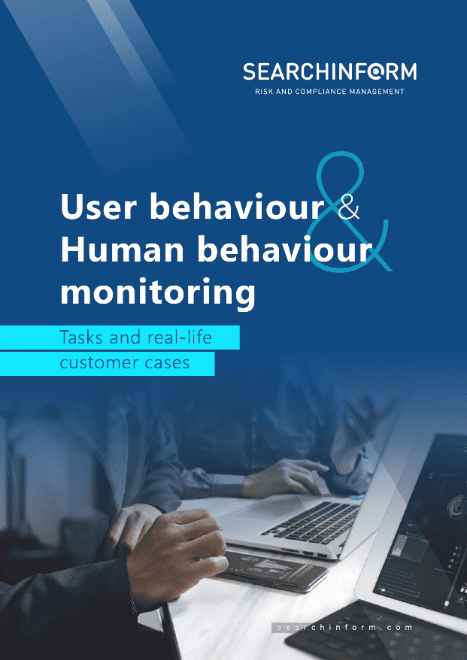Understanding Click Fraud and How to Prevent It
- Understanding Click Fraud
- Definition and Overview of Click Fraud
- The Different Types of Click Fraud
- Manual Click Fraud
- Bot-Driven Click Fraud
- Publisher Click Fraud
- Common Targets of Click Fraud
- The Impact of Click Fraud on Businesses
- Financial Consequences of Click Fraud
- Impact on Ad Campaign Performance
- Brand Reputation Damage
- Long-Term Business Implications
- How Click Fraud Operates
- Technical Mechanisms Behind Click Fraud
- Identifying Click Fraud Patterns
- The Role of Bots in Click Fraud
- Detecting and Preventing Click Fraud
- Early Detection Techniques
- Analyzing Traffic Sources
- Monitoring CTR (Click-Through Rates)
- Advanced Prevention Strategies
- Implementing IP Blocking and Geofencing
- Analyzing Behavioral Patterns
- Real-Time Click Fraud Prevention
- Future Trends in Click Fraud
- Emerging Threats in Click Fraud
- The Evolution of Click Fraud Tactics
- Innovations in Click Fraud Detection and Prevention
- SearchInform Solutions for Fraud Detection
- How SearchInform Monitors and Detects Fraud
Understanding Click Fraud
As the digital advertising landscape continues to evolve, so too do the methods used by fraudsters to exploit it. In previous chapters, we explored various types of fraud and the tactics criminals use to deceive organizations. Now, we turn our focus to a particularly insidious type of fraud that affects advertisers and publishers alike: click fraud. This deceptive practice undermines the effectiveness of online advertising campaigns, leading to significant financial losses and skewed analytics.
Definition and Overview of Click Fraud
Click fraud, often intertwined with ad fraud and pay-per-click (PPC) fraud, refers to the intentional and malicious clicking of online ads with the intent to deplete the advertiser's budget or to generate illegitimate revenue for the publisher. Unlike genuine clicks from potential customers, these fraudulent clicks serve no purpose other than to disrupt advertising efforts. Click fraud can occur in various forms, each with its own methods and motivations, making it a complex challenge for digital marketers to combat.
The Different Types of Click Fraud
Click fraud can manifest in several ways, each with unique characteristics and implications. Understanding these different types is crucial for developing effective strategies to detect and prevent fraudulent activity.
Manual Click Fraud
Manual click fraud is perhaps the most straightforward form, involving individuals who manually click on ads to exhaust an advertiser's budget. This type of click fraud often occurs when competitors or disgruntled individuals aim to sabotage a business's advertising efforts. Although this method requires significant effort, it can still cause substantial harm, especially in highly competitive industries.
Bot-Driven Click Fraud
In contrast to manual click fraud, bot-driven click fraud involves the use of automated scripts or bots to generate a high volume of fraudulent clicks on ads. These bots are often programmed to mimic human behavior, making them difficult to detect with traditional analytics tools. Bot-driven click fraud is particularly dangerous because it can scale rapidly, causing significant financial damage in a short period.
Publisher Click Fraud
Publisher click fraud occurs when website owners or publishers click on ads displayed on their own sites to inflate their ad revenue. This unethical practice not only defrauds advertisers but also undermines the integrity of the entire digital advertising ecosystem. Publisher click fraud can be especially challenging to detect because it often involves subtle, small-scale tactics that add up over time.
Common Targets of Click Fraud
Click fraud typically targets certain types of online advertising campaigns, exploiting their vulnerabilities to maximize fraudulent gains. The following are some of the most common targets:
- Pay-Per-Click (PPC) Campaigns: Since PPC campaigns charge advertisers based on the number of clicks their ads receive, they are prime targets for click fraud. Fraudsters exploit the pay-per-click model by generating fake clicks, leading to wasted ad spend and inaccurate performance metrics.
- High-Value Keywords: Ads associated with high-value keywords, particularly in competitive industries such as finance, insurance, and legal services, are often targeted by click fraud. The higher the cost-per-click (CPC), the more enticing the ad becomes for fraudsters seeking to drain an advertiser's budget.
- Mobile Advertising: Mobile ads are increasingly targeted by click fraud due to the growing prevalence of mobile browsing and app usage. Fraudsters use mobile-specific tactics, such as click injections and click spamming, to inflate click counts on mobile ads.
The next sections will delve deeper into the impact of click fraud on businesses, exploring how it skews analytics, drains advertising budgets, and ultimately harms the bottom line. Additionally, we will discuss advanced strategies and tools that businesses can use to detect and prevent click fraud, ensuring that their digital advertising efforts yield genuine results.
Understanding the intricacies of click fraud is essential for protecting your digital advertising investments and maintaining the integrity of your online marketing campaigns. By staying informed and vigilant, businesses can better safeguard themselves against this pervasive threat.
The Impact of Click Fraud on Businesses
In our previous discussion, we explored the various forms of click fraud, including manual, bot-driven, and publisher click fraud. Now, we shift our focus to the significant and far-reaching effects this type of fraud can have on businesses. Click fraud, along with its related forms such as ad fraud and pay-per-click fraud, can inflict severe damage on a company’s financial health, tarnish its brand reputation, and ultimately hinder long-term growth.
Financial Consequences of Click Fraud
One of the most immediate and tangible impacts of click fraud is its financial toll. Businesses often allocate substantial budgets to online advertising campaigns, relying on the pay-per-click (PPC) model to drive traffic and generate leads. However, when fraudulent clicks inflate ad spend without delivering genuine engagement, companies find themselves wasting valuable resources.
The financial losses from click fraud can be staggering, particularly for industries that rely heavily on high-cost keywords. For example, in sectors such as finance or insurance, where the cost-per-click (CPC) can reach significant amounts, even a small percentage of fraudulent clicks can translate into thousands of dollars in wasted ad spend. Over time, these losses can add up, straining marketing budgets and reducing the overall return on investment (ROI).
Impact on Ad Campaign Performance
Click fraud doesn’t just drain financial resources; it also skews the performance metrics that businesses rely on to measure the success of their ad campaigns. When click fraud occurs, the influx of illegitimate clicks distorts data, leading to inaccurate insights and poor decision-making. This distortion makes it difficult for marketers to determine which campaigns are truly effective and which need adjustment.
Moreover, fraudulent clicks can lower the quality score of ads on platforms like Google Ads, resulting in higher costs for future campaigns. As a result, businesses may find themselves caught in a vicious cycle where they pay more for less effective ads, all while their competitors potentially benefit from the confusion caused by click fraud.
Brand Reputation Damage
Beyond the immediate financial and performance impacts, click fraud can also harm a business’s brand reputation. When a company’s ads are repeatedly targeted by fraudulent activity, it can erode trust with consumers. For instance, users who are bombarded with irrelevant or repetitive ads due to click fraud may associate the brand with spammy or low-quality content. This negative perception can be difficult to reverse, especially in a highly competitive digital marketplace.
Additionally, businesses that unknowingly engage in click fraud as publishers—whether through third-party ad networks or unethical practices—risk damaging their credibility. Once a brand’s reputation is tarnished, it can take considerable effort and resources to rebuild trust with its audience and industry partners.
Long-Term Business Implications
The long-term implications of click fraud extend beyond immediate financial losses and damaged reputations. Persistent click fraud can undermine a company’s overall digital strategy, leading to ineffective marketing campaigns and missed growth opportunities. As businesses spend more on combating click fraud, they may be forced to divert resources away from innovation and expansion.
Furthermore, the prevalence of click fraud in the digital advertising ecosystem can create a climate of uncertainty and mistrust, making it more challenging for businesses to collaborate with partners and engage with customers. In the long run, this environment of suspicion can stifle industry growth, limit the effectiveness of online advertising, and diminish the potential for businesses to reach new markets.
and perform with SearchInform DLP:
How Click Fraud Operates
In our previous exploration of the impact click fraud has on businesses, we uncovered the significant financial, reputational, and strategic damages that can arise from this deceptive practice. To effectively combat click fraud, it’s essential to understand the technical mechanisms that power it and the sophisticated tactics employed by fraudsters. By delving into how click fraud operates, businesses can better identify and mitigate these fraudulent activities.
Technical Mechanisms Behind Click Fraud
At its core, click fraud involves the manipulation of online advertising systems to generate illegitimate clicks on pay-per-click (PPC) ads. These fraudulent clicks are designed to exhaust the advertiser's budget, distort performance metrics, or unfairly increase revenue for publishers. The technical mechanisms that drive click fraud can vary widely, from simple manual clicks to highly sophisticated automated systems.
One common method involves the use of click farms—large groups of individuals paid to manually click on ads. These click farms, often located in regions with low labor costs, can generate a high volume of clicks that appear genuine, making detection challenging. Another technique involves the use of botnets, which are networks of compromised computers controlled by fraudsters. These botnets can execute click fraud on a massive scale, generating thousands of clicks across multiple devices, often with IP addresses spread across different geographic locations to evade detection.
Additionally, fraudsters may employ scripted automation tools to mimic human behavior. These scripts are designed to navigate websites, click on ads, and even interact with page elements in a way that closely resembles legitimate user behavior. By doing so, they can bypass basic anti-fraud measures and remain undetected by advertisers and ad networks.
Identifying Click Fraud Patterns
Detecting click fraud requires a keen understanding of the patterns and anomalies that often accompany fraudulent activity. One of the key indicators of click fraud is a sudden spike in click-through rates (CTR) without a corresponding increase in conversions. If an ad campaign is receiving a large number of clicks but few actual purchases or sign-ups, it’s a strong sign that click fraud might be at play.
Another common pattern is abnormal user behavior, such as extremely short session durations, high bounce rates, or repeated interactions with the same ad. These behaviors suggest that the clicks are not coming from genuinely interested users but rather from automated systems or individuals with no intent to engage with the content.
Geographic inconsistencies can also be a red flag. For example, if a campaign targeting a specific region suddenly receives a significant number of clicks from unrelated countries, it may indicate that a botnet is generating fraudulent clicks. Similarly, clicks originating from a high concentration of IP addresses or from proxy servers are often linked to click fraud schemes.
The Role of Bots in Click Fraud
Bots play a central role in modern click fraud operations, contributing to the vast majority of fraudulent clicks in the digital advertising ecosystem. These automated programs are designed to execute tasks at a scale and speed that far exceed human capabilities, making them the preferred tool for fraudsters aiming to generate large volumes of illegitimate clicks.
Bots can be categorized into basic bots and advanced bots. Basic bots execute simple tasks, such as clicking on ads in a repetitive manner, without any attempt to disguise their activity. While these bots can be effective in generating clicks, they are often easier to detect due to their predictable patterns.
Advanced bots, on the other hand, are far more sophisticated. They are equipped with algorithms that allow them to simulate human behavior, including randomizing click patterns, varying the timing of clicks, and even interacting with page elements such as scrolling or clicking on multiple links. These bots can bypass many detection systems, making them a significant threat to advertisers.
Detecting and Preventing Click Fraud
As we’ve explored in previous chapters, click fraud, ad fraud, and pay-per-click (PPC) fraud can wreak havoc on advertising budgets and campaign performance. Understanding the mechanisms behind these fraudulent activities is crucial, but even more critical is knowing how to detect and prevent them. By employing a range of early detection techniques and advanced prevention strategies, businesses can safeguard their digital advertising investments and ensure that their campaigns reach the intended audience.
Early Detection Techniques
Early detection is the first line of defense against click fraud. By identifying fraudulent activity as soon as it begins, businesses can minimize financial losses and prevent skewed campaign data. One effective technique involves real-time monitoring of ad performance metrics. By keeping a close watch on click-through rates (CTR), conversion rates, and other key indicators, businesses can quickly spot anomalies that may suggest fraudulent activity.
Another essential early detection method is traffic analysis. By examining where clicks are coming from—geographically, by IP address, or by device type—businesses can identify suspicious patterns. For instance, a sudden influx of clicks from a region not targeted by the campaign or from a cluster of similar IP addresses could signal a click fraud attack.

Analyzing Traffic Sources
A deeper dive into traffic sources can reveal a lot about the legitimacy of clicks. Referrer analysis is one approach that allows businesses to track where traffic is originating. By analyzing the referrers—whether from search engines, social media, or direct visits—companies can identify sources that are sending suspicious traffic.
Additionally, device fingerprinting can be used to track and analyze the characteristics of devices that are generating clicks. This technique helps in identifying patterns among devices that may indicate automated or bot-driven clicks. If a significant percentage of clicks come from devices with identical or nearly identical fingerprints, it’s a strong indicator of click fraud.
Monitoring CTR (Click-Through Rates)
Monitoring click-through rates (CTR) is another effective strategy for detecting click fraud. A sudden spike in CTR, particularly if it isn’t accompanied by a corresponding increase in conversions, is often a red flag. While high CTRs are generally desirable, an unusually high CTR could indicate that bots or click farms are targeting the ads.
Moreover, businesses should also monitor CTR consistency over time. Significant fluctuations in CTR without any changes to the ad content, targeting, or budget may suggest that fraudulent clicks are affecting the campaign. By setting up automated alerts for unusual CTR patterns, businesses can respond quickly to potential fraud.
Advanced Prevention Strategies
While early detection is critical, preventing click fraud from happening in the first place is the ultimate goal. Advanced prevention strategies involve a combination of technology, best practices, and ongoing vigilance.
One of the most effective strategies is using machine learning to detect fraud. Machine learning algorithms can analyze vast amounts of data in real-time, identifying patterns and anomalies that might be missed by human analysts. These algorithms learn and adapt over time, improving their accuracy in detecting click fraud. For instance, they can recognize behavioral patterns that are typical of bots or click farms, allowing businesses to take immediate action.
Implementing IP Blocking and Geofencing
Another powerful prevention technique is IP blocking and geofencing. By blocking IP addresses known to be associated with fraudulent activity, businesses can prevent these sources from interacting with their ads. Geofencing, on the other hand, restricts ad exposure to specific geographic areas. This approach is particularly useful for local campaigns, where traffic from outside the targeted region is unlikely to be legitimate.
Businesses can also use negative IP lists, which are lists of IP addresses that have been flagged for suspicious activity. By cross-referencing traffic with these lists, companies can block known fraudulent sources from the outset, reducing the likelihood of click fraud.
Analyzing Behavioral Patterns
Click fraud prevention also involves analyzing behavioral patterns. Fraudulent clicks often exhibit different behaviors compared to legitimate ones. For example, a bot might click on an ad and then immediately leave the site, resulting in an abnormally high bounce rate. By analyzing these patterns—such as time spent on the page, interaction with site elements, and navigation paths—businesses can identify and block fraudulent activity.
Moreover, implementing heatmaps and session recordings can provide insights into how users interact with the website after clicking on an ad. If the interactions seem unnatural or automated, it’s a clear sign that click fraud may be occurring.
Real-Time Click Fraud Prevention
The most effective defense against click fraud is real-time prevention. This involves deploying tools that can instantly detect and block fraudulent clicks as they happen. Real-time click fraud prevention tools analyze incoming traffic, comparing it against known fraud patterns and immediately filtering out suspicious clicks.
These tools often use a combination of behavioral analytics, machine learning, and automated blocking to protect ad campaigns. By stopping fraudulent clicks before they can impact the campaign, businesses can maintain accurate data, protect their budgets, and ensure that their ads are reaching real, potential customers.
Future Trends in Click Fraud
As we’ve explored the mechanisms, impacts, and prevention strategies for click fraud, it’s clear that this form of ad fraud poses a persistent and evolving threat to digital advertisers. However, the battle against click fraud is far from over. As technology advances, so do the tactics used by fraudsters. In this section, we’ll delve into the future trends in click fraud, examining the emerging threats, the evolution of fraudulent tactics, and the innovations in detection and prevention that businesses must adopt to stay ahead.
Emerging Threats in Click Fraud
The digital advertising landscape is constantly changing, and with it, the nature of click fraud evolves. One of the most concerning emerging threats is the rise of AI-driven click fraud. As artificial intelligence (AI) becomes more accessible, fraudsters are leveraging this technology to create more sophisticated bots that can mimic human behavior with greater accuracy. These AI-powered bots can engage in ad fraud by clicking on ads, filling out forms, and even interacting with website content in ways that are nearly indistinguishable from genuine users. This level of sophistication makes detecting click fraud more challenging than ever before.
Another emerging threat is the increased targeting of mobile devices. With the growing prevalence of mobile internet usage, fraudsters are shifting their focus to mobile ads, exploiting vulnerabilities in mobile ad networks and apps. Techniques such as click injection and click spamming are becoming more common in the mobile environment, allowing fraudsters to generate fraudulent clicks at a massive scale without raising immediate suspicion.
The Evolution of Click Fraud Tactics
Click fraud tactics are not static; they continuously evolve in response to new technologies and detection methods. One notable evolution is the shift towards multi-stage click fraud schemes. In these schemes, fraudsters use a combination of techniques to avoid detection, such as blending manual clicks with bot-driven clicks, or spreading fraudulent activity across multiple platforms and devices. This makes it harder for traditional detection systems to identify and block fraudulent clicks.
Another significant development is the use of deepfake technology in click fraud. Deepfakes, which use AI to create highly realistic but fake content, can be used to manipulate ad impressions and clicks. For instance, fraudsters might create fake user profiles that interact with ads in convincing ways, leading to a new wave of ad fraud that is incredibly difficult to detect and prevent.
Additionally, the increasing use of blockchain technology in advertising could both mitigate and complicate click fraud. On one hand, blockchain can offer greater transparency and traceability in ad transactions, making it harder for fraudsters to operate undetected. On the other hand, as blockchain becomes more integrated into digital advertising, fraudsters are likely to develop new methods to exploit this technology for click fraud purposes.
Innovations in Click Fraud Detection and Prevention
As click fraud tactics evolve, so must the strategies for detecting and preventing them. One of the most promising innovations in this area is the application of machine learning algorithms. Machine learning offers the ability to analyze large datasets in real-time, identifying subtle patterns and anomalies that could indicate click fraud. These algorithms can adapt to new fraud techniques, making them more effective than traditional rule-based detection methods.
Another innovation is the use of predictive analytics to anticipate and prevent click fraud. By analyzing historical data and trends, predictive models can forecast where and when click fraud is most likely to occur. This allows businesses to proactively adjust their ad campaigns and implement preventive measures before fraudsters strike.
Furthermore, the integration of cross-platform fraud detection tools is becoming increasingly important. As ad campaigns span multiple platforms—such as social media, search engines, and mobile apps—fraud detection systems must be able to track and analyze user behavior across all these channels. This holistic approach helps in identifying click fraud that might otherwise go unnoticed if only a single platform is monitored.
Another exciting development is the use of behavioral biometrics in click fraud prevention. Behavioral biometrics analyze the unique ways in which users interact with devices, such as typing patterns, mouse movements, and touch screen gestures. By comparing these behaviors against known legitimate user profiles, businesses can detect and block fraudulent clicks with greater precision.
The future of click fraud detection and prevention will likely also involve collaborative efforts among industry players. As the threat of click fraud grows, companies, ad networks, and cybersecurity firms are increasingly working together to share data and insights. This collaborative approach helps to create a more comprehensive defense against click fraud, as it allows for the pooling of resources and knowledge to stay ahead of emerging threats.
SearchInform Solutions for Fraud Detection
In our exploration of the evolving landscape of click fraud, ad fraud, and pay-per-click fraud, it’s evident that businesses need robust solutions to combat these sophisticated threats. SearchInform, known for its comprehensive approach to data security and fraud prevention, offers a suite of tools designed specifically to detect and mitigate fraudulent activities in digital advertising. In this section, we’ll delve into how SearchInform monitors and detects fraud, and how its solutions seamlessly integrate with existing advertising platforms to enhance protection against these pervasive threats.
How SearchInform Monitors and Detects Fraud
SearchInform’s approach to fraud detection is rooted in its advanced monitoring capabilities, which provide real-time insights into online advertising activities. The platform utilizes a combination of machine learning algorithms, behavioral analytics, and automated detection systems to identify suspicious patterns indicative of click fraud, ad fraud, and pay-per-click fraud.
One of the key strengths of SearchInform’s fraud detection lies in its real-time monitoring. The platform continuously tracks ad interactions across various channels, analyzing metrics such as click-through rates (CTR), bounce rates, and conversion rates. This constant vigilance allows SearchInform to detect anomalies almost instantly, ensuring that fraudulent activities are identified before they can cause significant damage.
SearchInform also leverages machine learning algorithms to enhance its fraud detection capabilities. These algorithms are trained on vast datasets, enabling them to recognize even the most subtle indicators of click fraud and ad fraud. As these algorithms learn and adapt over time, they become increasingly effective at distinguishing between legitimate user behavior and fraudulent activities. This adaptive learning process is crucial in staying ahead of the ever-evolving tactics employed by fraudsters.
In addition to machine learning, SearchInform employs behavioral analytics to detect fraud. By analyzing user interactions with ads—such as mouse movements, click patterns, and session durations—the platform can identify behaviors that are inconsistent with genuine user engagement. For instance, a high frequency of rapid clicks on an ad with little to no interaction with the website’s content is a strong signal of click fraud. SearchInform’s behavioral analytics can pinpoint these discrepancies, allowing businesses to take immediate action.
Extend the range of addressed challenges with minimum effort
Company news
SearchInform uses four types of cookies as described below. You can decide which categories of cookies you wish to accept to improve your experience on our website. To learn more about the cookies we use on our site, please read our Cookie Policy.
Necessary Cookies
Always active. These cookies are essential to our website working effectively.
Cookies does not collect personal information. You can disable the cookie files
record
on the Internet Settings tab in your browser.
Functional Cookies
These cookies allow SearchInform to provide enhanced functionality and personalization, such as remembering the language you choose to interact with the website.
Performance Cookies
These cookies enable SearchInform to understand what information is the most valuable to you, so we can improve our services and website.
Third-party Cookies
These cookies are created by other resources to allow our website to embed content from other websites, for example, images, ads, and text.
Please enable Functional Cookies
You have disabled the Functional Cookies.
To complete the form and get in touch with us, you need to enable Functional Cookies.
Otherwise the form cannot be sent to us.

Subscribe to our newsletter and receive a bright and useful tutorial Explaining Information Security in 4 steps!

Subscribe to our newsletter and receive case studies in comics!







